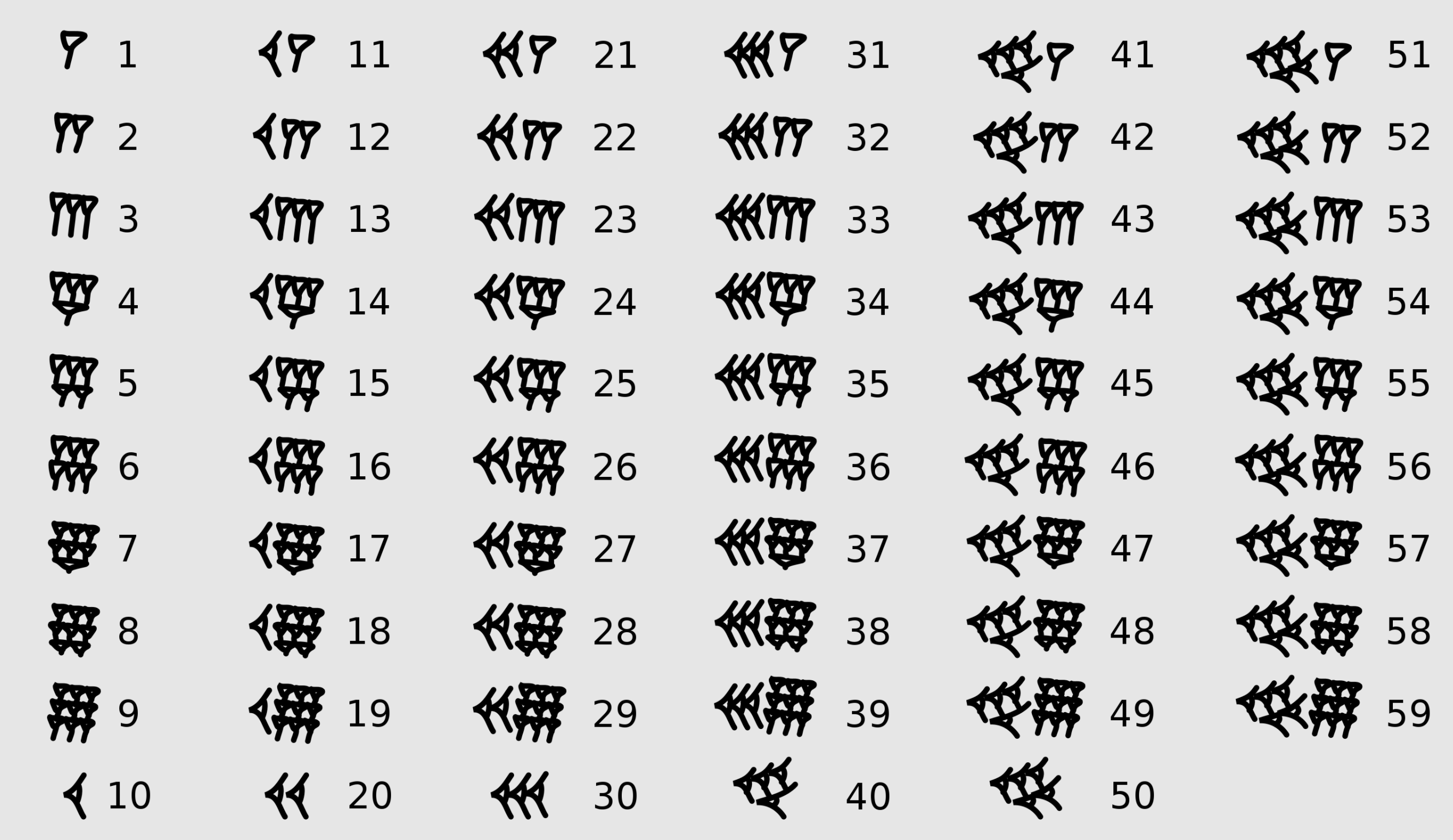What do you think the following means?
1010
One-thousand and ten, right? What if I told you that it meant four-thousand one-hundred and twelve? Or three-hundred and fifty? Or simply ten? The truth is that all of these answers are right, depending on what number system you’re using. Let me illustrate with a more abstract example. Imagine you have two symbols that you’re using to count objects. When you have no objects, you represent that with a triangle. When you have one object, you represent it with a heart. What if you have two objects? Well, we can simply box up both of our symbols and use another heart in a different position, say, slightly to the left, to indicate that we have one box of two symbols! To represent three symbols, we can write two hearts next to each other, one heart representing the original meaning–one object–and the next heart representing the second meaning–a box containing two objects. Now when we add both meanings, we get three because our symbols represent three total objects. To represent four, we can use another heart in a different position that represents a box containing two boxes, each with two objects. This is what is known as the binary system, though it is typically employed using the more familiar symbols 0 and 1. The number which we originally displayed, 1010, can be read as follows, from right to left (in our standard decimal system).
(0 * 2^0) + (1 * 2^1) + (0 * 2^2) + (1 * 2^3) = (0 * 1) + (1 * 2) + (0 * 4) + (1 * 8) = 0 + 2 + 0 + 8 = 10
The reason we multiply each number by some power of two is that we have two symbols in this number system. We would call this a base-two number system. In our more familiar decimal system, we have ten symbols–0, 1, 2, 3, 4, 5, 6, 7, 8, and 9. We would call this a base-ten number system. If we wish to represent the number ten, we write “10” to show that we have one box of the preceding ten symbols, and no extra numbers–thus ten total objects. Going back to our original example, the number 1010 in decimal just means
(0 * 10^0) + (1 * 10^1) + (0 * 10^2) + (1 * 10^3) = (0 * 1) + (1 * 10) + (0 * 100) + (1 * 1000) = 0 + 10 + 0 + 1000 = 1010
Likewise, if we want to use some strange number of symbols, like thirteen, we are more than free to do so. We could represent them as follows, the first number as the symbol in our base-thirteen system, the second as our symbol in decimal.
0 = 0, 1 = 1, 2 = 2, … (and so on up to nine), A = 10, B = 11, C = 12. Note that even though we have thirteen symbols, we don’t have a specific symbol that equals thirteen because our symbol for zero gets us up to thirteen total symbols. To represent thirteen, we would write 10 (one box of thirteen objects and zero loose objects). Thus, 1010 would mean
(0 * 13^0) + (1 * 13^1) + (0 * 13^2) + (1 * 13^3) = (0 * 1) + (1 * 13) + (0 * 169) + (1 * 2197) = 0 + 13 + 0 + 2197 = 2210
I hope that makes sense. The main point of this exercise is to show that symbols can be completely arbitrary. Zero does not need to be represented by “0,” nor does two-hundred and eighty-three need to be represented as “283.” We could represent them as a pyramid and a hippo if we wanted to, although the decimal system does a fairly good job at keeping matters concise.

Image Credit: Babylonian numerals under GNU Free Documentation License.


